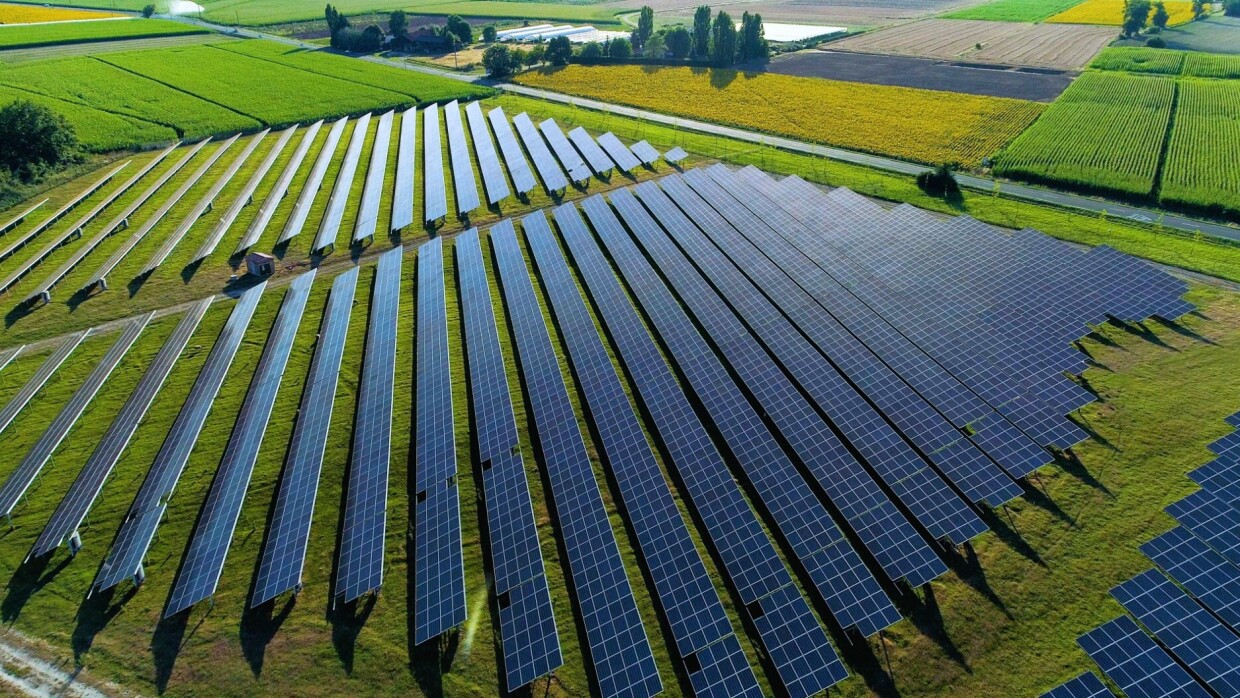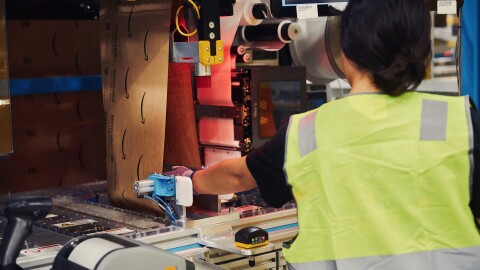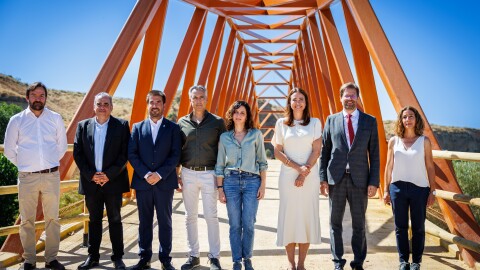Brussels, July 15, 2021. Yesterday the European Commission released the long awaited “Fit for 55” legislative package, a major building block of the European Green Deal. These legislative proposals aim to put Europe on course to be the first climate neutral continent by 2050 and reduce emissions by 55 percent by 2030. These are ambitious goals and Amazon applauds the European Union for recognizing the urgency of the climate crisis and making climate policy a priority for Europe.
This important legislative package will strengthen policies on renewable energy, sustainable transportation, energy efficiency, land use and more. We agree with the importance of addressing these crucial areas. Amazon is already taking action to advance the goals of the European Green Deal through our own goal of being net-zero carbon by 2040.
Accelerating Wind and Solar
With the update to the Renewable Energy Directive, Europe will continue to decarbonize the energy sector. Amazon is contributing to this effort, and is now the largest corporate renewable energy buyer in Europe, and the world. We are enabling renewable energy projects across Europe, from utility scale solar power purchase agreements (PPAs) in Spain to offshore wind projects off the coasts of the Netherlands and Germany. Amazon is on a path to be powered by 100% renewable energy by 2025 – five years ahead of our original target of 2030. There is a lot of potential for corporate buyers to accelerate the renewable energy transition through PPAs, and we are eager for this latest update to the Renewable Energy Directive to help continue that trend.
Prioritizing Energy Efficiency
Europe and Amazon’s energy strategies both prioritize energy efficiency and ensure that reducing consumption remains a priority. The Energy Efficiency Directive is increasing the energy saving target for Europe. At the same time, the energy efficiency of Amazon Web Services (AWS) cloud computing is advancing the twin transition towards climate neutrality and digitalization.
The AWS cloud is far more efficient than traditional on-premises computing. In fact, a study by 451 Research, an international analyst firm, shows that AWS’s infrastructure is 3.6 times more energy efficient than the median of U.S. enterprise data centers surveyed. This energy savings is driven, in part, from the comprehensive efficiency programs that touch every facet of AWS facilities. By moving compute, storage and business applications to AWS, European public sector agencies, enterprises, and startups can help drive energy efficiency gains that contribute to a climate neutral Europe by 2050 as they reinvent their core businesses.
Delivering low carbon transportation
The European Green Deal is changing the way we move around, accelerating the transition to electric vehicles, and advancing new low carbon fuels. At Amazon, we are already moving in the same direction. We’re decarbonizing transportation across our business by increasing fleet efficiency, expanding the use of lower-carbon fuels, and scaling electric and alternative fuel vehicles. We also partner on initiatives to reduce and avoid carbon emissions in the wider transportation industry, and engage with policymakers and other decision-makers to advance policies in support of transportation decarbonization.
Our sustainability approach is based on science, and this often leads us to counter-intuitive discoveries, such as the fact that the fastest delivery options can be the least carbon-intensive ones. Products that we fulfill on a short time horizon are generally eligible for fast shipment because they are stored in close proximity to the customer. Close proximity to the customer allows for less carbon intensity in the delivery than a product that was farther away. In fact, a recent Oliver Wyman research report found that in-person shopping creates between 1.5 and 2.9 times more greenhouse gas emissions than online shopping. Delivery vans are able to carry many customer orders and help reduce customer car trips. We know that we need to move fast to transition transportation fleets to electric and hydrogen, and we need fueling stations to keep vehicles moving. We applaud the work the Commission is doing to ramp up the infrastructure needed for the clean fuel transition.
Aiming for a circular economy
Amazon is working to minimize waste, increasing recycling and providing options for our customers to reuse, repair and recycle their products. In line with the aims of the Circular Economy Action Plan and the revision of the Packaging Waste Directive, Amazon has pioneered innovations in sustainable packaging initiatives, including Frustration-Free Packaging (FFP). Since 2015, FFP has eliminated more than 1 million tonnes of packaging materials – the equivalent of 2 billion shipping boxes – by promoting easy-to-open, recyclable packaging and shipping products in their own packages without additional shipping boxes. Our packaging programmes have reduced packaging weight per shipment by more than 36%. We also know that customers can help reduce waste, which is why we launched Amazon Second Chance, where customers from countries across Europe can return some of their products for trade-in, repair or recycling.
Empowering customers to choose sustainable products
Amazon customers in Europe want to be able to choose products that are trusted as being more sustainable and feel confident that green claims are verified to align with the European Green Deal. The Amazon Climate Pledge Friendly program makes it easy for customers to discover and shop for more sustainable products. Customers will now see the Climate Pledge Friendly badge on more than 75,000 products in Europe to signify that the products have at least one of more than 20 different sustainability certifications that help preserve the natural world. We have partnered with the EU EcoLabel, Blue Angel and Nordic Swan in Europe, among others, to highlight sustainable products in our catalogue via the Climate Pledge Friendly program. We know that customers want to feel confident in sustainability claims made by companies about their products, and Climate Pledge Friendly integrates information from recognized and reputable certifiers.
Accelerating climate research by making data available
The European Green Deal is driving the twin transition towards a future with both digital and sustainable growth. Making climate data available for research and science is key to inform policy decisions that will enable the development and deployment of sustainable and decarbonizing technologies and services. The Amazon Sustainability Data Initiative (ASDI) supports innovators and researchers with publicly available data, cloud grants, and technical expertise they need to move sustainability to the next level. This enables scientific organizations to host and deploy large-scale datasets on AWS (including weather observations, climate projection data, satellite imagery, hydrological data, air quality data, and ocean forecast data) and empowers researchers to analyze massive amounts of data in mere minutes. ASDI datasets originate from across Europe, including atmospheric models from Meteo France, Finnish Meteorological Institute Weather Radar Data, and data from the Earth System Grid Federation, which was used for the United Nation’s Intergovernmental Panel on Climate Change’s Sixth Assessment Report. Data hosted on AWS through ASDI is helping European start-ups, such as Greenspin and Climate Data Factory, build value-add products and services to support a climate neutral economy.
Amazon is committed to building a sustainable business for our customers and the planet. Science tells us that we have a limited window to act and stay below a predicted 1.5-degree Celsius global temperature rise. We realize the need to move fast, which is why we co-founded The Climate Pledge and committed to be net-zero carbon by 2040. We are pleased that the European Union is on a similar path with the European Green Deal and its ambition to make Europe the first climate neutral continent by 2050. We have a lot of work ahead and know that by working together we can address the challenge through innovation, collaboration and partnerships and with relentless effort, we can build a better future.












